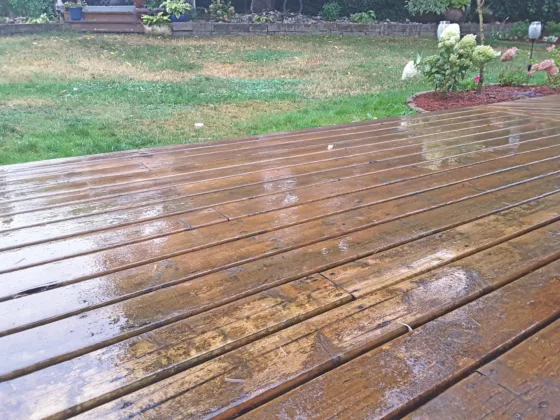Table of Contents Show
Winter is in full swing, and with the dropping temperatures, families are turning up the heat. However, what many consumers fail to realize is that heating and cooling are major contributors to a home’s carbon footprint, accounting for over 40% of total emissions on average. But fear not, there are simple steps you can take to reduce your environmental impact this winter season.
1. Embrace the Warmth of Layers
Before you reach for the thermostat, consider adding an extra layer of clothing. By bundling up in cozy sweaters and warm socks, you can keep yourself comfortable without cranking up the heat. Not only will this reduce your energy consumption, but it will also save you money on your heating bills.
2. Seal the Drafts
One of the biggest culprits for heat loss during winter is drafts. Check your windows and doors for any gaps or cracks that may be letting cold air in. Use weatherstripping or caulking to seal these areas and prevent heat from escaping. You’ll be amazed at how much warmer your home feels and how much energy you’ll save.
3. Optimize Your Thermostat
Take advantage of the programmable features on your thermostat. Set it to lower temperatures when you’re away from home or sleeping, and raise it only when you need the extra warmth. By making small adjustments, you can significantly reduce your energy consumption without sacrificing comfort.
4. Let the Sun In
During the day, open your curtains or blinds to allow sunlight to naturally heat your home. This simple act can make a noticeable difference in the temperature of your living spaces. And don’t forget to close them at night to keep the cold air out.
5. Insulate Your Home
Proper insulation is key to keeping your home warm and energy-efficient. Make sure your walls, attic, and crawl spaces are adequately insulated to prevent heat loss. Adding insulation can be a worthwhile investment that pays for itself in reduced energy bills over time.
6. Upgrade to Energy-Efficient Heating
If your furnace is outdated, consider upgrading to a more energy-efficient model. Newer furnaces use less energy and produce fewer emissions, making them a greener choice. Additionally, regular maintenance and cleaning of your heating system can improve its efficiency and prolong its lifespan.
7. Use Space Heaters Wisely
Space heaters can be a convenient way to warm up a specific area without heating the entire house. However, they can also be energy hogs if used improperly. Use space heaters sparingly and only in occupied rooms. Remember to turn them off when you leave the room or go to sleep.
8. Consider Alternative Heating Sources
Exploring alternative heating sources can be a great way to reduce your carbon footprint. Options such as geothermal heating, solar panels, or biomass stoves can provide efficient and sustainable ways to heat your home. While these options may require an initial investment, they can result in long-term energy savings and environmental benefits.
Also Read:
9. Don’t Forget About Your Water Heater
Hot water usage tends to increase during the colder months, so it’s important to ensure your water heater is operating efficiently. Insulate your water heater and pipes to minimize heat loss, and consider lowering the temperature setting to save energy. Fix any leaks promptly to avoid wasting both water and energy.
10. Spread the Word
Lastly, share these tips with your friends, family, and neighbors. By spreading awareness and encouraging others to reduce their environmental impact, we can make a collective difference in preserving our planet.
Conclusion
Remember, every small action counts. By implementing these 10 simple steps, you can significantly reduce your environmental impact this winter. From embracing the warmth of layers to upgrading to energy-efficient heating, these tips will not only save you money but also contribute to a greener planet. Start making a difference today and make this winter a season of sustainability.
Frequently Asked Questions About Ways to Reduce Your Carbon Footprint This Winter
Q: Why is it important to reduce our carbon footprint in winter?
A: Winter can be a challenging time for the environment, as we tend to use more energy to keep warm. By reducing our carbon footprint, we can help combat climate change and protect our planet for future generations.
Q: Can I still stay warm while reducing my carbon footprint?
A: Absolutely! You can stay cozy and reduce your carbon footprint at the same time. Layer up with warm clothing, blankets, and cozy slippers. Use a hot water bottle or a heating pad to keep warm in bed. And don’t forget the power of a good cup of hot tea or cocoa to warm you from the inside out!
Q: Are there any outdoor activities that can help reduce our carbon footprint in winter?
A: Yes! Instead of driving, consider walking or biking to nearby destinations. If you’re feeling adventurous, try cross-country skiing or snowshoeing as a fun and eco-friendly way to explore the winter wonderland.
Q: How can I encourage others to reduce their carbon footprint in winter?
A: Lead by example! Share your experiences and tips with friends and family. Organize a winter-themed eco-conscious event or challenge. Remember, every small change makes a difference, and together we can create a greener future.










